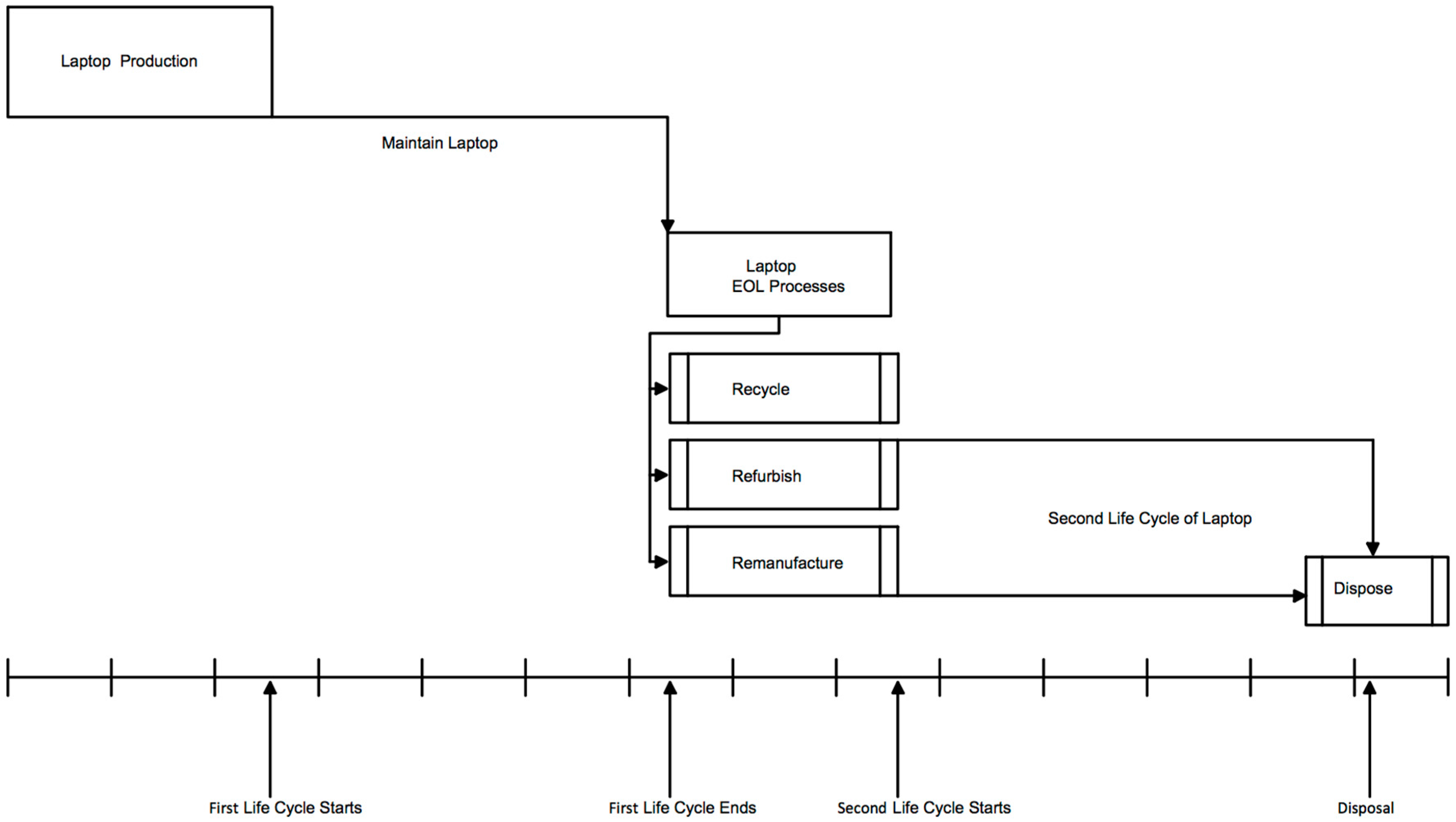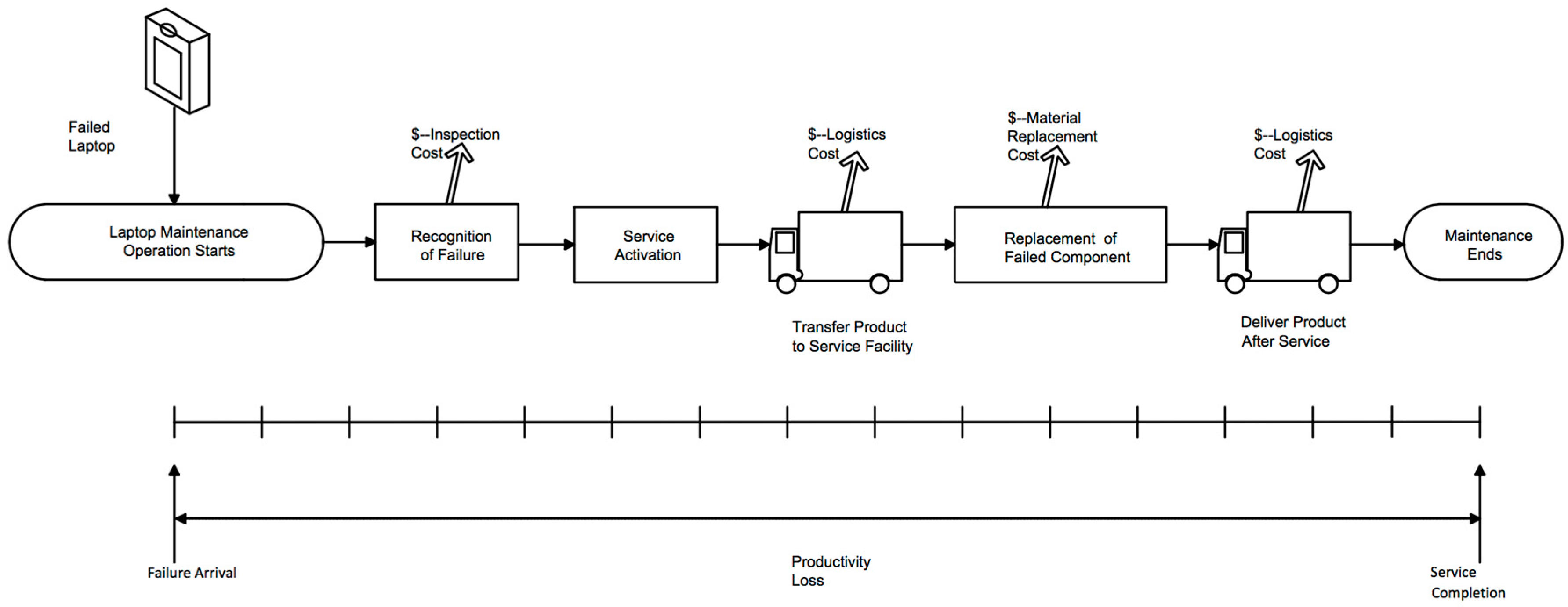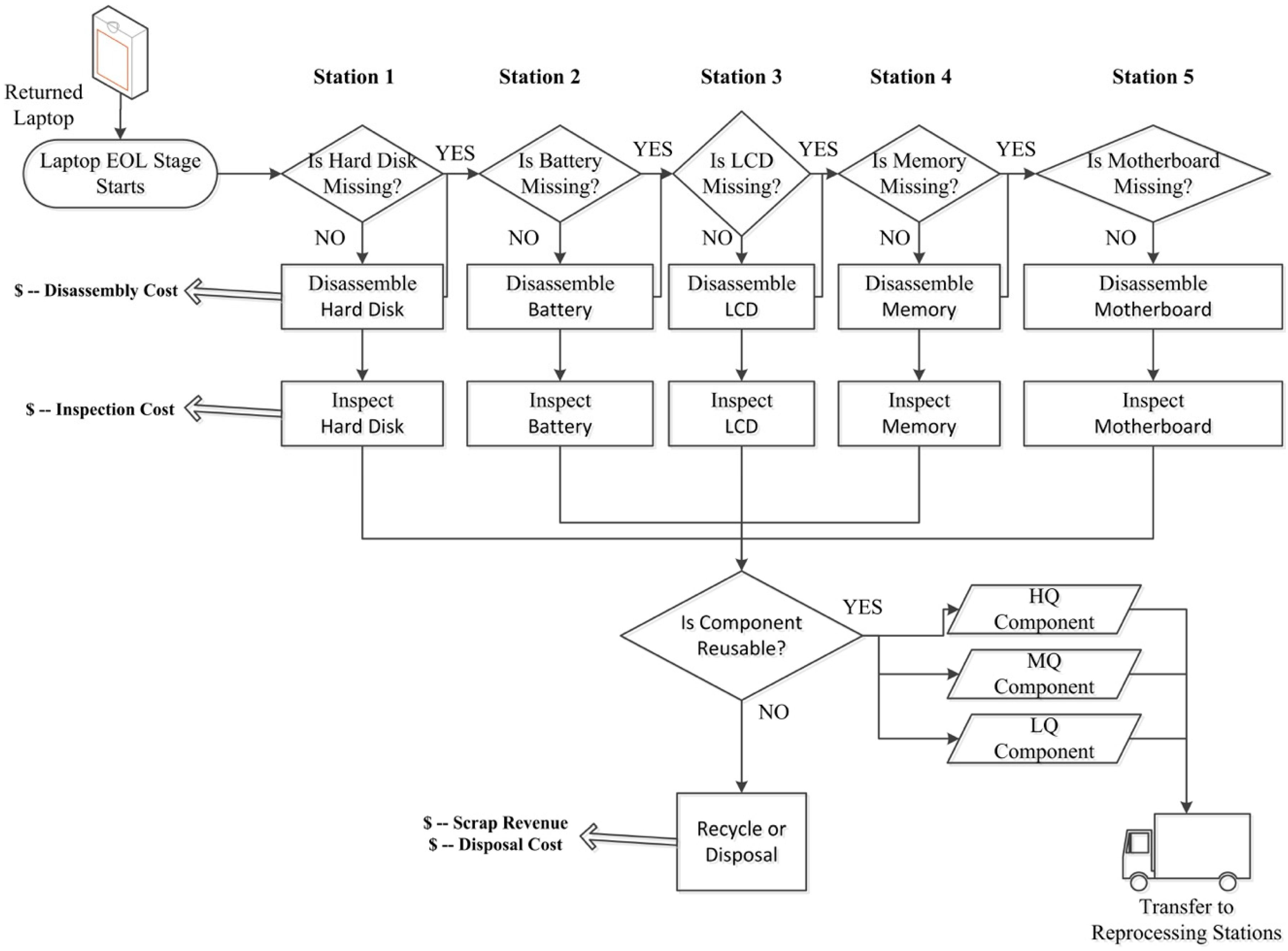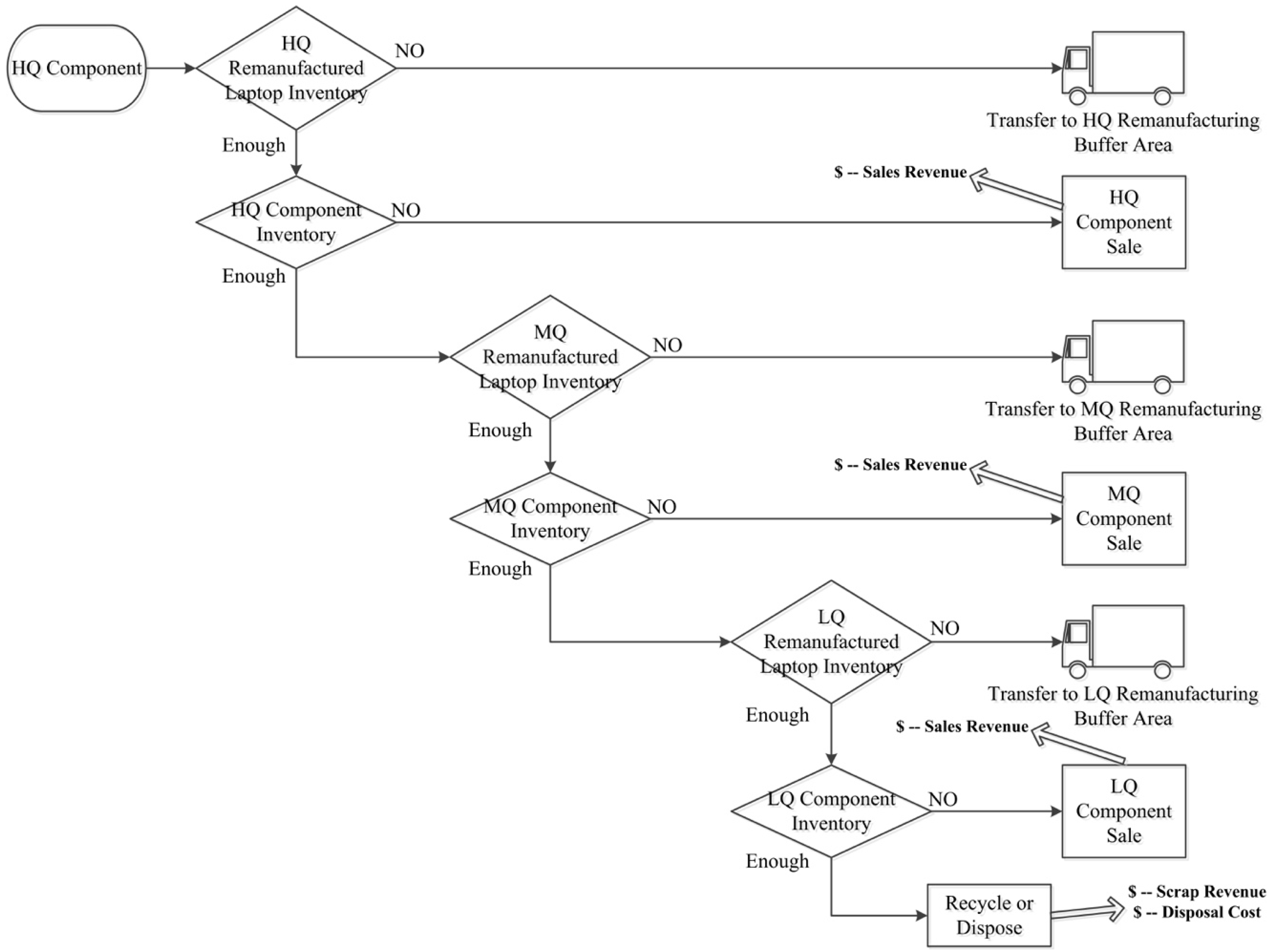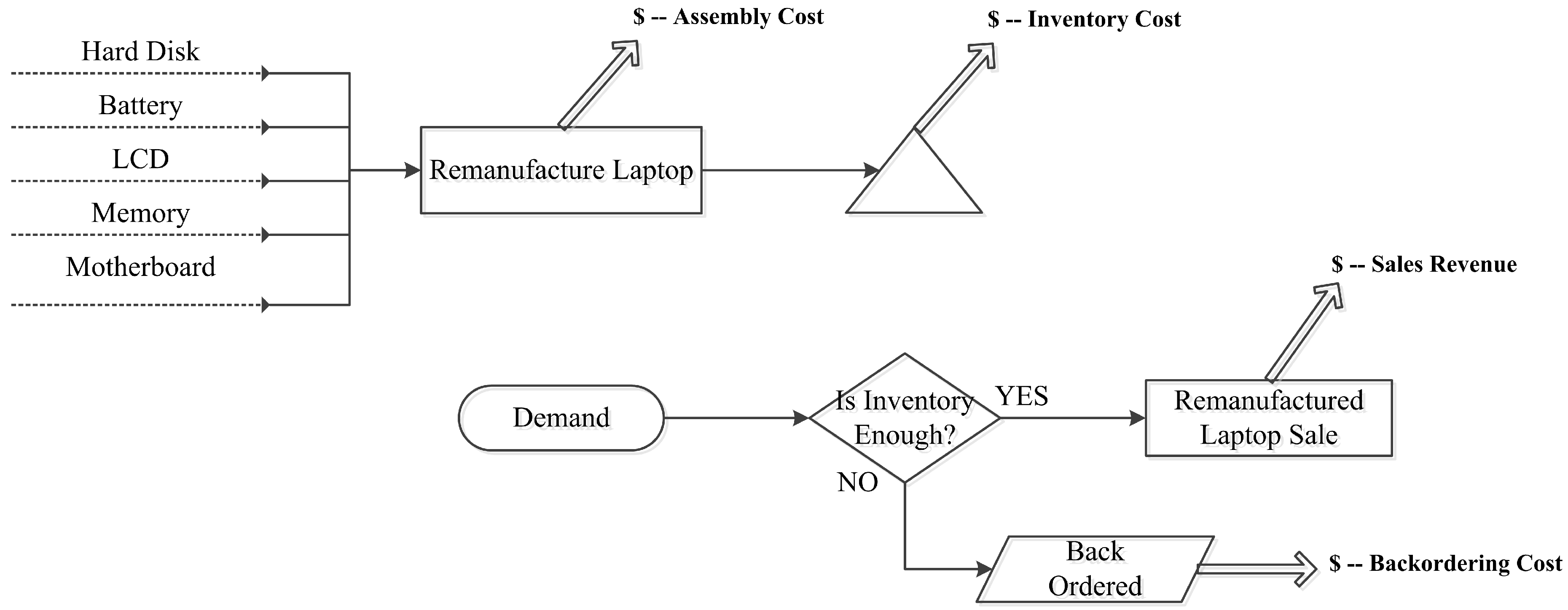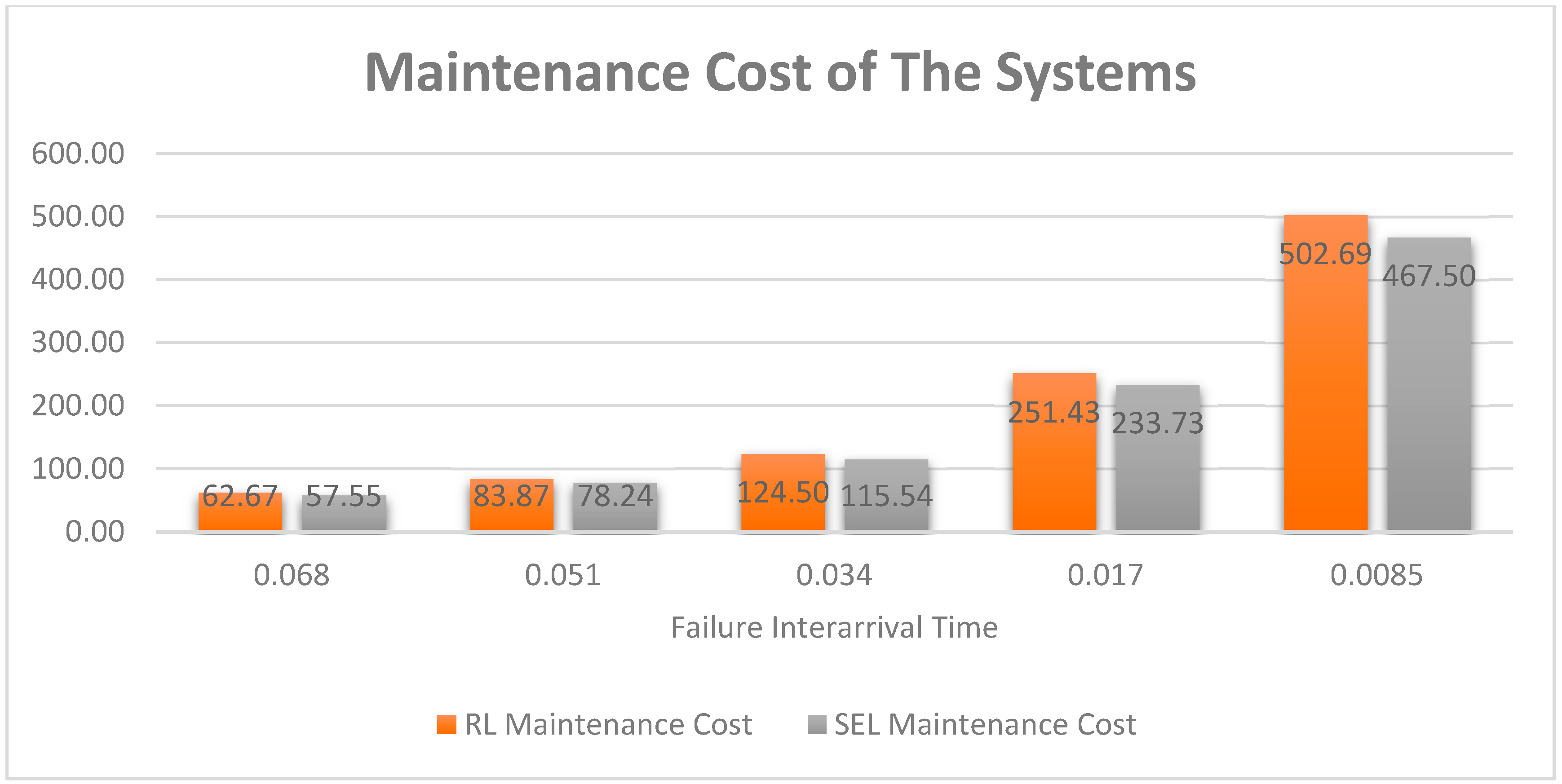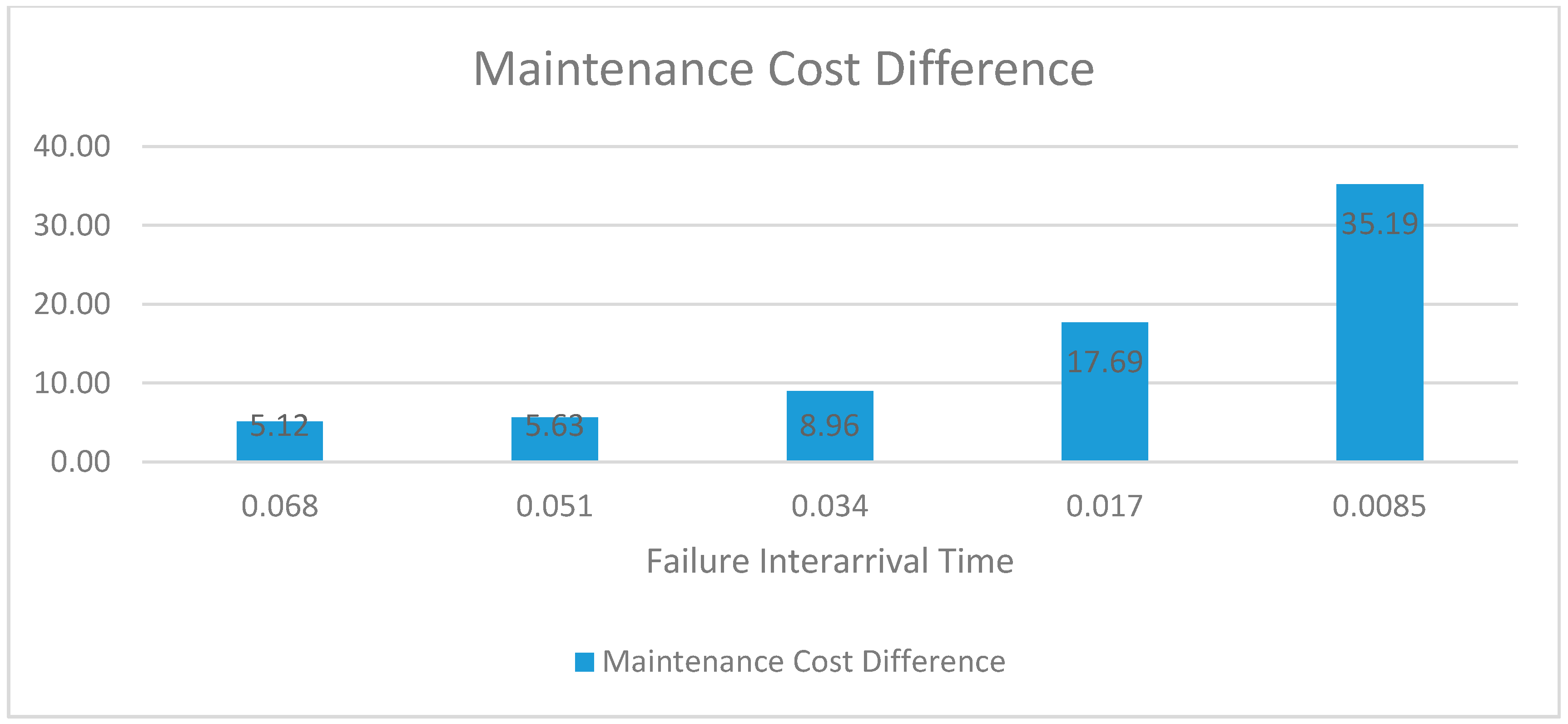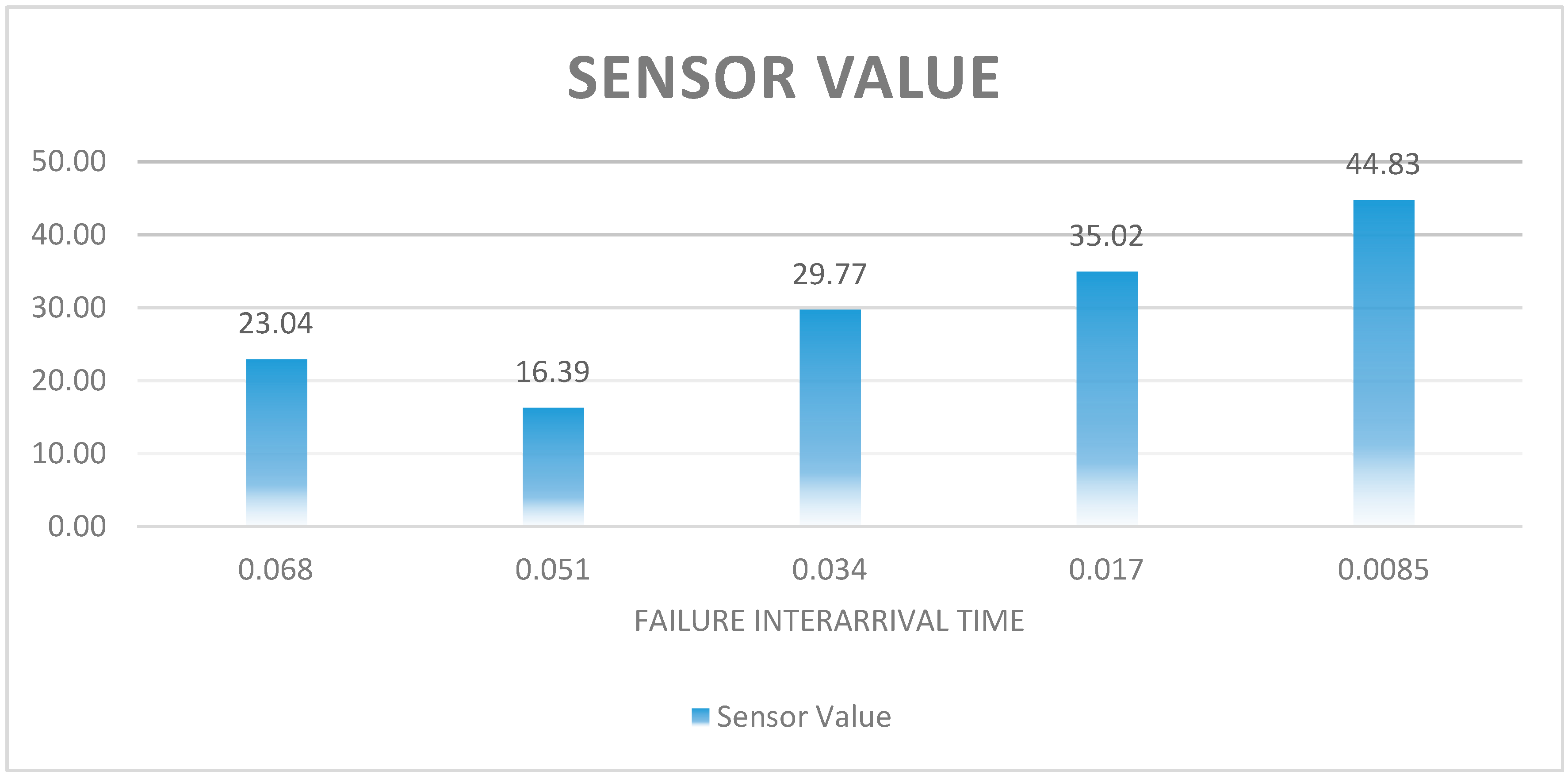2.2. Remanufacturing
Remanufacturing is an industrial process and potential recovery option that involves converting worn-out products into like-new condition [
6,
7]. Remanufacturing processes add difficulty to the closed-loop supply chain systems because they are highly variable and uncertain. To this end, researchers have proposed various solutions to remanufacturing-related problems.
The remanufacturing scheduling problem is an example of these problems. Scheduling remanufacturing tasks can be viewed as an element of regular assembly scheduling because items that are suitable for remanufacturing follow the assembly process after they are extracted from the used products. However, uncertainty surrounding the conditions of the disassembled items and the number of returns may mean that remanufacturing scheduling presents different problems to those that are associated with regular assembly scheduling. Existing literature has described the methods that can be used to reduce the uncertainty involved in remanufacturing scheduling.
Giglio et al. [
8] presented a paper that solves the job scheduling problem by using a relax-and-fit heuristics approach. Quariguasi-Frota-Neto and Bloemhof [
9] compared the eco-efficiency of the remanufactured computer and mobile phones to their new counterparts. Abbey et al. [
10] presented an empirical study that evaluates the perception of remanufactured products. Green perception enhances the attractiveness of the remanufactured products. Component reuse gains importance in remanufacturing. A model that employs component reuse in remanufacturing was revealed in [
11]. Colledani et al. [
12] published a paper that explains de-manufacturing systems concept which consists of disassembly, remanufacturing, recycling, and recovery processes. They provide detailed research framework for this area.
2.3. Disassembly
Disassembly can be defined as a systematic method for separating a product into its constituent parts, components, subassemblies, or other groupings [
13]. After products are collected for EOL processing, they are disassembled; as such, disassembly plays a crucial role in product recovery. Relevant literature with disassembly scheduling was reviewed for this study.
Scheduling within the context of disassembly processes aims to disassemble components in a given order in accordance with the relationships between them. Disassembly scheduling has been of interest to many researchers. Kim et al. [
14] defined the basic disassembly scheduling problem and presented a literature review of existing studies on disassembly scheduling. Morgan and Gagnon [
15] published a detailed review paper about disassembly and remanufacturing scheduling.
Gupta and Taleb [
16] used a modified reverse MRP for disassembly scheduling and planning. Based on this method, the quantity of the products to be disassembled to fulfill the demand for components and the disassembly schedule over a given time span were determined. Taleb and Gupta [
17] proposed a two-phase algorithm to reach the same goal as [
16], but for multiple product structures. The algorithm consisted of two phases: core and allocation algorithms. The core algorithm was used to identify the required quantity of products for disassembly, and the allocation algorithm helped plan the disassembly schedule over a time horizon. Taleb et al. [
18] considered parts commonality in disassembly scheduling as an extension of the problem presented in [
16]. Lee and Xirouchakis [
19] developed two-stage heuristics for the disassembly scheduling problem to minimize the total cost of the process; i.e., the sum of the inventory and disassembly costs. The first phase employed the existing algorithm proposed by Gupta and Taleb [
16]. In the second phase, improvement heuristics were used to improve the initial solution. Barba-Gutierrez et al. [
20] considered lot sizing in disassembly scheduling by further extending Gupta and Taleb’s [
16] study.
Habibi et al. [
21] published a paper that proposes a model to support circular economy of supply chains. This model considers disassembling EOL products to fulfill component demand of EOL products and gain profit by remanufacturing/recycling products. Jeihoonian et al. [
22] presented a case study of durable products to solve a closed-loop supply chain problem. In this paper, they used Benders decomposition to find optimal set of disassembly facilities in the reverse part of the network.
2.5. Information Retrieval Systems
The majority of contemporary supply chain networks incorporate information retrieval systems because these systems offer numerous benefits; for example, providing effective inventory management and real-time tracking information, which facilitates efficient routing and planning. Depending on the information flow they provide, information retrieval systems can be divided into two categories: radio-frequency identification (RFID) and sensor embedded systems. RFID tags and embedded sensors allow the unique identification of products. Recent literature refers to sensor-embedded and RFID-attached products as intelligent products.
Angeles [
27] explained the benefits of RFID applications in supply chains. They described how visibility throughout the supply chain system is improved by using these technologies. Moreover, they provided an overview of implementation strategies through describing case studies that were conducted in several places including Walmart and the Department of Defense. Bose et al. [
28] highlighted the benefits that RFID technology can provide to supply chain systems by explaining how they can increase the efficiency of inventory control. RFID can save labor and inventory costs and reduce the occurrence of stock-outs in the systems. A study by Dutta et al. [
29] examined the value that RFID technology can bring to supply chains by improving the inventory performance of the system. As was the case with the work of [
28], the main benefits were highlighted as labor cost savings, reduced stock-outs, and enhanced visibility. Dutta and Whang [
30] presented several case studies to determine the benefits of RFID applications in inventory control. Dai et al. [
31] explained how RFIDs could be helpful in inventory control and pointed out that they can explicitly increase item-level visibility. Madni et al. [
32] introduced RFID technology by defining classifications of RFID tags, active and passive, and providing examples of their use in real life. They emphasized the increase in the visibility of supply chain systems and explained the quantitative benefits of RFIDs. Ngai and Riggins [
33] summarized the use of RFIDs in supply chain operations and inventory control. Ngai [
34] argued that the value that RFID brings to assembly lines, logistics, and supply chain management results from the unique information that they provided.
Vadde et al. [
35] assessed the use of embedded sensors in products as a means of collecting information about these products and their components during their life cycles. This information was stored within the sensors’ data storage units. The information was divided into two categories: static and dynamic data. Static data consisted of the product’s bill of materials, details about its components and materials, disassembly sequence, the age of the product and estimated lifetime, and which servicing operations it required during its life cycle. Dynamic data provided simultaneous information about the product. It showed the usage patterns, how many hours the product had been in use, and the environmental conditions to which the product had been exposed. The data was used to determine the conditions of the product components and produce a remaining life estimation for each component. Petriu et al. [
36] introduced the use of sensor-based appliances and discussed how they could be beneficial for the environment. Borriello [
37] highlighted that sensors could potentially be applied as an extension of passive RFID tags and subsequently used to track products during their life cycles.
Ilgin and Gupta [
38] presented a study to evaluate the economic benefits of sensors when they are embedded into products on a multi-product disassembly line. The main purpose of embedding sensors into the products within the context of their study was to estimate the remaining life spans of the components of the products [
35]. By using the remaining life information, Ilgin and Gupta [
38] aimed to reduce the disassembly, inspection, holding, backordering, transportation, and disposal costs of a reverse supply chain system. They argued that the cost of the disassembly process could be reduced by eliminating any unnecessary disassembly operations related to non-operable components. Since the sensors provided important information about the functionality of the components before the products were disassembled, those that were inoperable were not disassembled unless they were required for the precedence relationship. Moreover, there was no need to inspect the disassembled components because the sensors provided the required information about the respective conditions of the components. Therefore, the inspection costs were eliminated from the expenses. Furthermore, the inventory was managed and updated simultaneously using the data collected by the sensors and this information was used to manage inventory efficiently and fulfill demand on time, resulting in lower holding and backordering costs. Finally, transportation and disposal costs were reduced because the operators had the ability to proactively plan the disposal of non-functional components. In a series of papers, [
39,
40,
41,
42,
43], the authors experimented the cases that proposes using sensors in different products and discussed the economic benefits of using sensors in product recovery. Ilgin and Gupta [
39] presented a single-product disassembly line controlled by a multi-kanban system and investigated the use of sensors in product recovery of this system. Ilgin and Gupta [
40] studied the benefits of sensors in a system which requires less complex disassembly compared to [
39]. Ilgin et al. [
42,
43] considered commonality between products and modeled systems allowing for different product types to be disassembled through the same disassembly line.
Ondemir and Gupta [
44] developed a model for a sensor-embedded product system to optimize the fulfillment of refurbished product demands by refurbishing products after disassembly or by procuring them from outside vendors. They used a hybrid generic algorithm to solve the model. Ondemir et al. [
45] and Ondemir and Gupta [
46] introduced DTO and a repair-to-order system. This system operated on the basis of a pull strategy by which demand dictated the disassembly operation. Disassembled components were repaired, and demand was fulfilled. Mathematical modeling and multi-criteria decision-making models were adopted to solve the problem. Ondemir and Gupta [
47,
48,
49] examined a DTO and remanufacturing-to-order system, which operated based on a pull strategy by which remanufactured product demand, component demand, and material demand dictated the disassembly operation. Following the disassembly operation, sensor-embedded products were either remanufactured, refurbished, or recycled to fulfill the respective demands. The authors used fuzzy goal programming [
47], integer programming [
48], and an Internet of Things approach [
49] to solve the problem.
Dulman and Gupta [
50,
51,
52] combined the sensor-embedded product systems of Ilgin and Gupta [
38] with those suggested by Ondemir and Gupta [
49] and introduced a closed-loop supply chain system that consisted of collecting EOL products, disassembling the EOL products, classifying disassembled components into different quality bins based on their conditions, and gaining revenue by remanufacturing, refurbishing, and recycling the disassembled components. They quantified the benefits of the sensors embedded in cell phones by modeling the proposed system with discrete event simulation. The major benefit of this model was that it could reduce the disassembly and inspection costs of a closed-loop supply chain system. In a later study, Dulman and Gupta [
53], demonstrated the use of sensors to improve the performance of maintenance activities in closed-loop supply chains. Alqahtani and Gupta [
54,
55] presented the use of sensors to determine an optimal warranty policy which is offered for remanufactured products. By using sensors, remaining lives of the products can be estimated prior to remanufacturing products. Thus, a proper warranty period can be determined for those remanufactured products. In these papers, authors examined different warranty policies, such as renewable, one-dimensional, free replacement warranty, pro-rata warranty, and a combination of them.
